Let’s face it: Our students love math tricks, often more than we do as teachers.
These tricks make them feel like they’re taking a shortcut and pulling a rabbit out of a hat. Still, kids need to learn how to problem-solve, and tricks or shortcuts don’t always serve them when it comes time to work their way through a math problem.
So are there any math tricks for kids that are worth sharing? Is there any way to do so without undermining their understanding of particular math concepts? Well, sure! There’s significant research out there that suggests it’s OK for kids to pick up some math tricks once they’re adept at a particular concept.
We’ve pulled together a few of our favourite math tricks for kids that are worth sharing. From tricks to make division a snap to new ways to look at subtraction, there’s a lot of packed in here. Before you teach them, might we suggest discussing when and where “tricks” are appropriate?
Math Tricks for Kids
Divisibility Rules
OK, so these are “rules” more so than maths tricks, but learning them certainly helps students make quick work of division problems, so we’ve got to get started right here!
- A number is divisible by 2 if the last digit of the one’s place is divisible by 2.
- A number is divisible by 3 if the sum of the digits is divisible by 3.
- A number is divisible by 4 if the last two digits in the number are divisible by 4.
- A number is divisible by 5 if the last digit is a 0 or 5.
- A number is divisible by 6 if the number is divisible by both 2 and 3.
- A number is divisible by 8 if the sum of the digits is divisible by 9.
Easy Subtraction with No Grouping
Once your students have an understanding of how to do subtraction with regrouping (borrowing), this little shortcut is a great ‘trick’ to teach your students!
You can introduce the concept of looking at subtraction as the distance between two numbers.
So, if you look at the numbers 4000 and 1394, the distance between those two numbers is the same as the distance between 3999 and 1393. Therefore, if you are provided with the sum 4000-1394, you can subtract 1 from each of those numbers and subtract 1393 from 3999 to get the same answer.
Obviously, you are not going to always subtract 1, it’s only if you need to make the top number (or most of the digits in that number) smaller to decrease the amount of ‘borrowing’ and ‘grouping’ you have to do.
A great conversation to have with your students to discuss why or why not it is worth subtracting the 1 first.
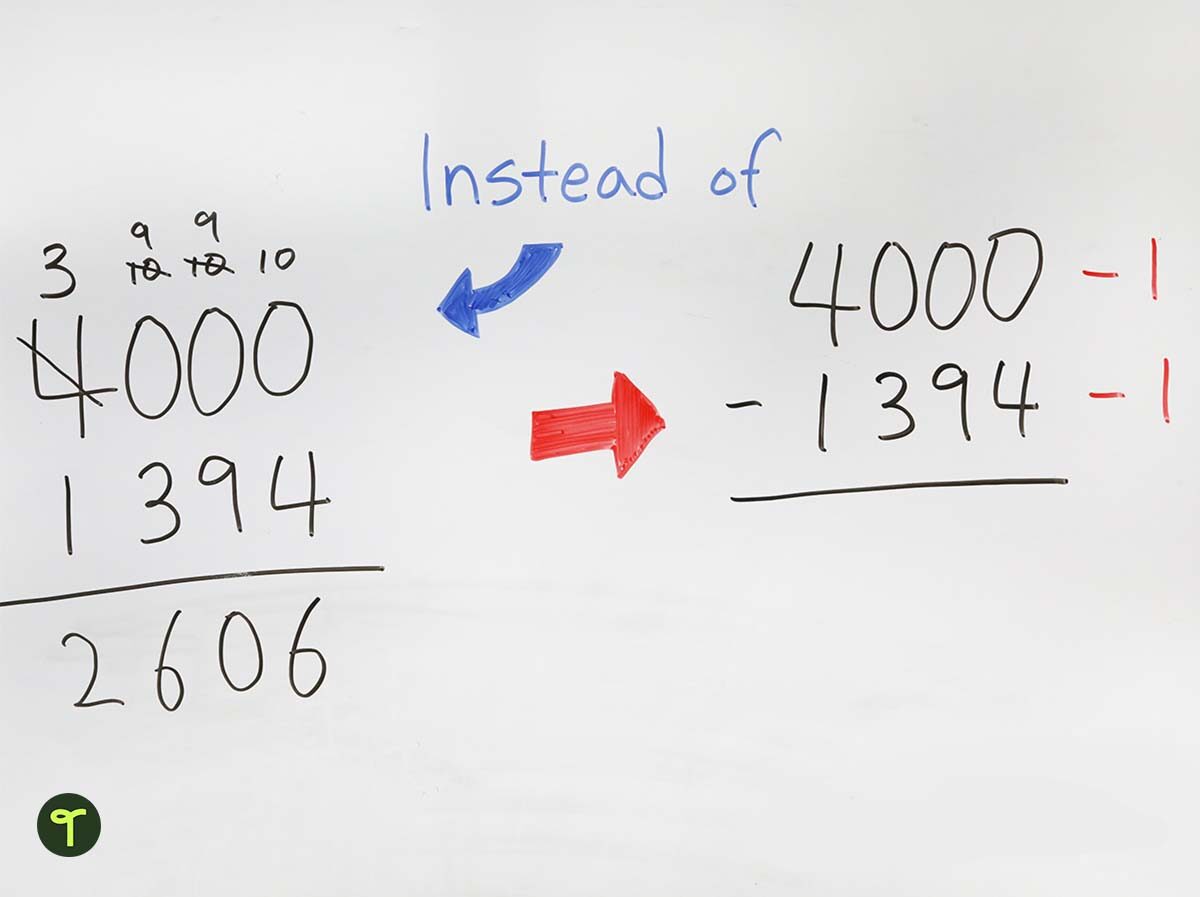
Obviously, you are not going to always subtract 1 — that’s only if you need to make the top number (or most of the digits in that number) smaller to decrease the amount of ‘borrowing’ and ‘grouping’ you have to do.
A great conversation to have with your students to discuss why or why not it is worth subtracting the 1 first.
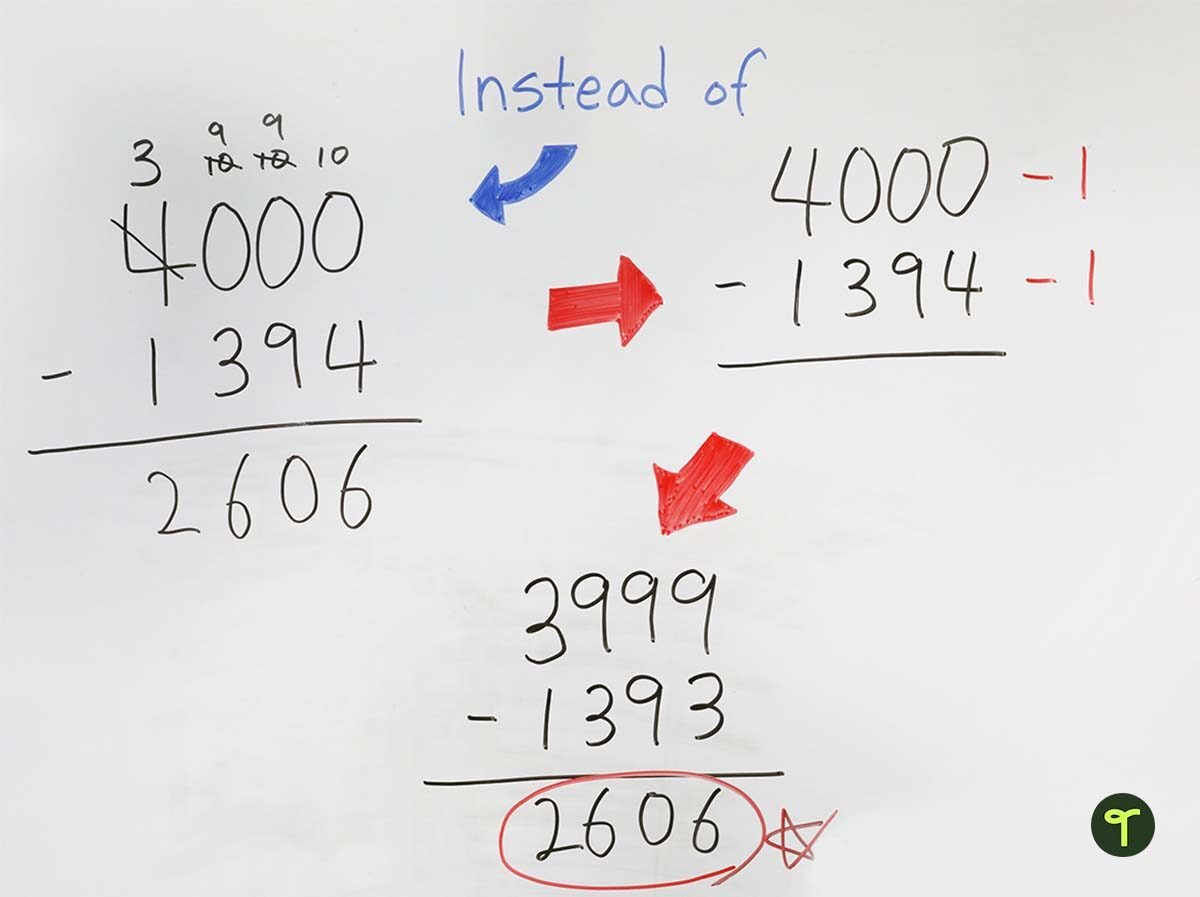
Note: Some subtraction problems may not be an easy subtract 1 scenario. For example 652 – 198. Taking 1 off each of these numbers doesn’t result in an easier subtraction sum. Instead, you could simply subtract 3 to make it easier. There is still some regrouping needed however, it’s not as difficult.
Print a subtraction strategies activity that makes use of addition to help students find the answer.
How to Compare Fractions Easily
Fractions can get really confusing, especially when students need to compare two of them and they don’t have the same denominator.
There is a really cool trick to help figure out which fraction is the larger. By multiplying the top number of each fraction by the bottom number of the other fraction you can easily get the answer.
This is also called ‘cross multiplying’ because you create a cross in the middle.
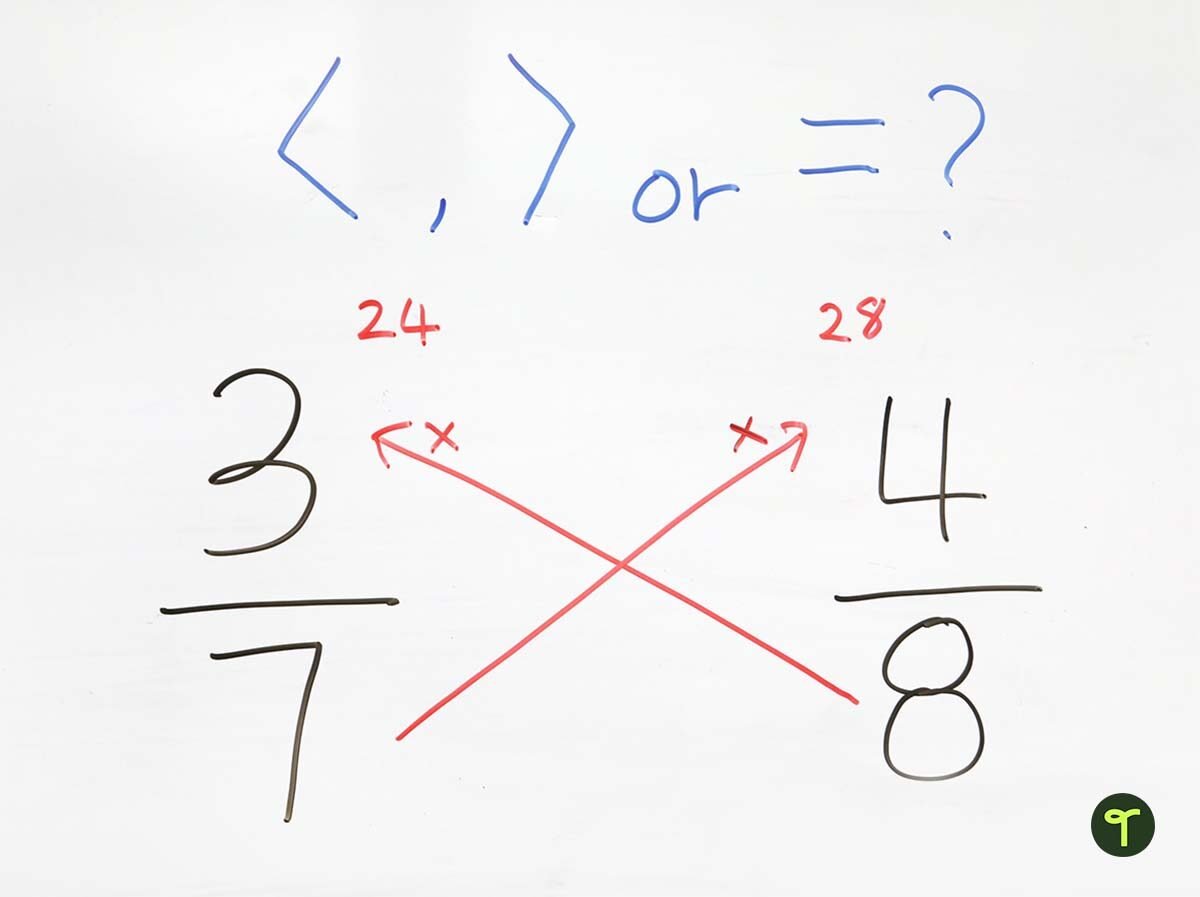
The numbers that you get from cross multiplying fractions become the two numerators you would get if your students had gone through the process of creating two ‘like’ fractions. All they need to do now is work out the bigger number of the two!
Multiplying Double-Digit Numbers by 11
To multiply any two-digit numbers by 11, simply add the digits of the number together. Put the result of your addition between the two digits of your original number.
For example, to quickly find the answer to 26 x 11, start by adding the two digits of the number 26 together to get 2+6=8.
Next, put this new number between the original two digits to get 286. That’s the answer!
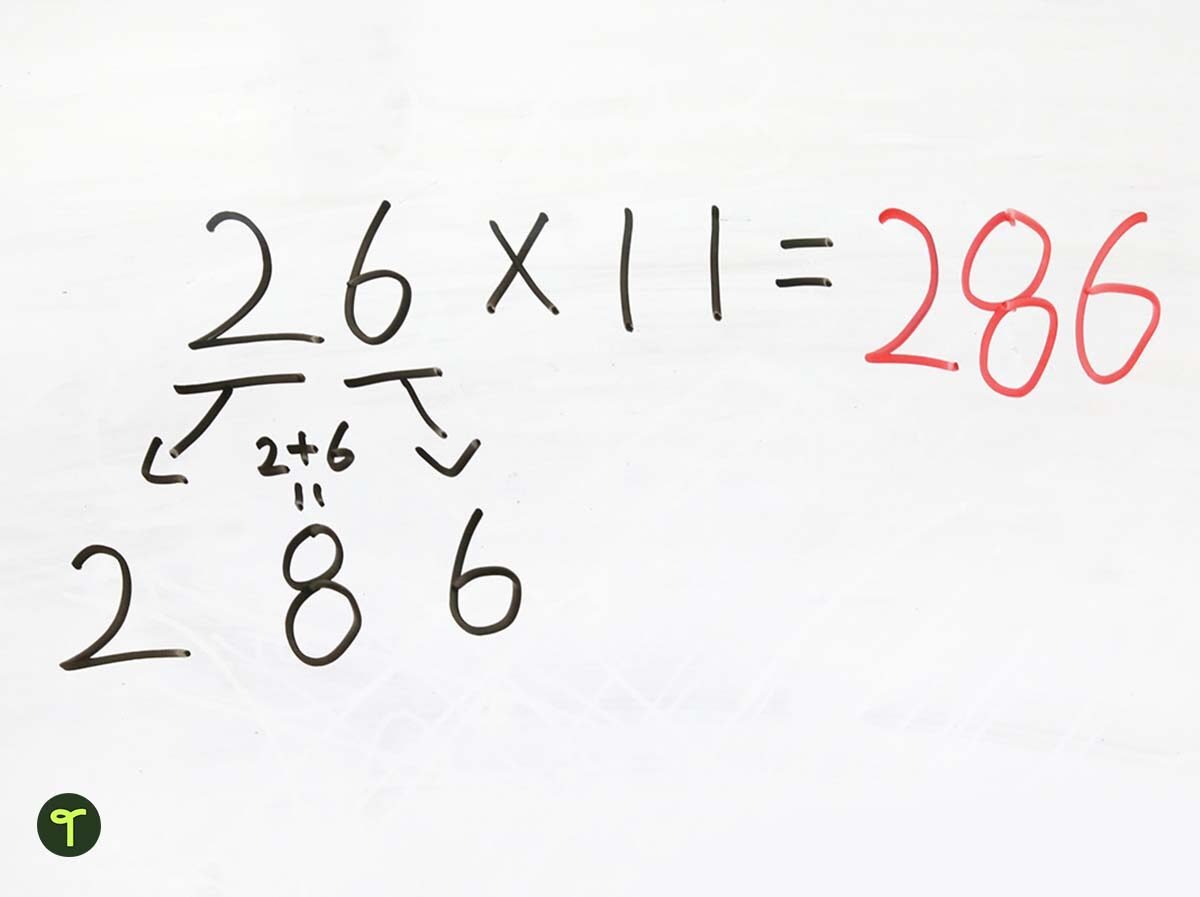
But wait a second. What if the sum of the two digits is greater than 9? In that case, carry the 1 over to the tens digit and add the two numbers. For example: 47 x 11 = 517. When you break it down: 4+7 = 11.
Japanese Multiplication
Have you seen this multiplication trick? It can get tricky with middle numbers, so we’re going to mark this down as something fun to teach at the end of the year!
This trick takes a multiplication problem and turns it into a simple counting problem that can be solved visually. To show this math trick in action, let’s start with a simple multiplication problem. Basically, you are looking at 2 x 3, or 2 groups of 3.
By drawing 2 lines one way and 3 lines the other, you create an intersection of 2 groups of 3. By counting all of the times the lines intersect, you get your answer: 6.
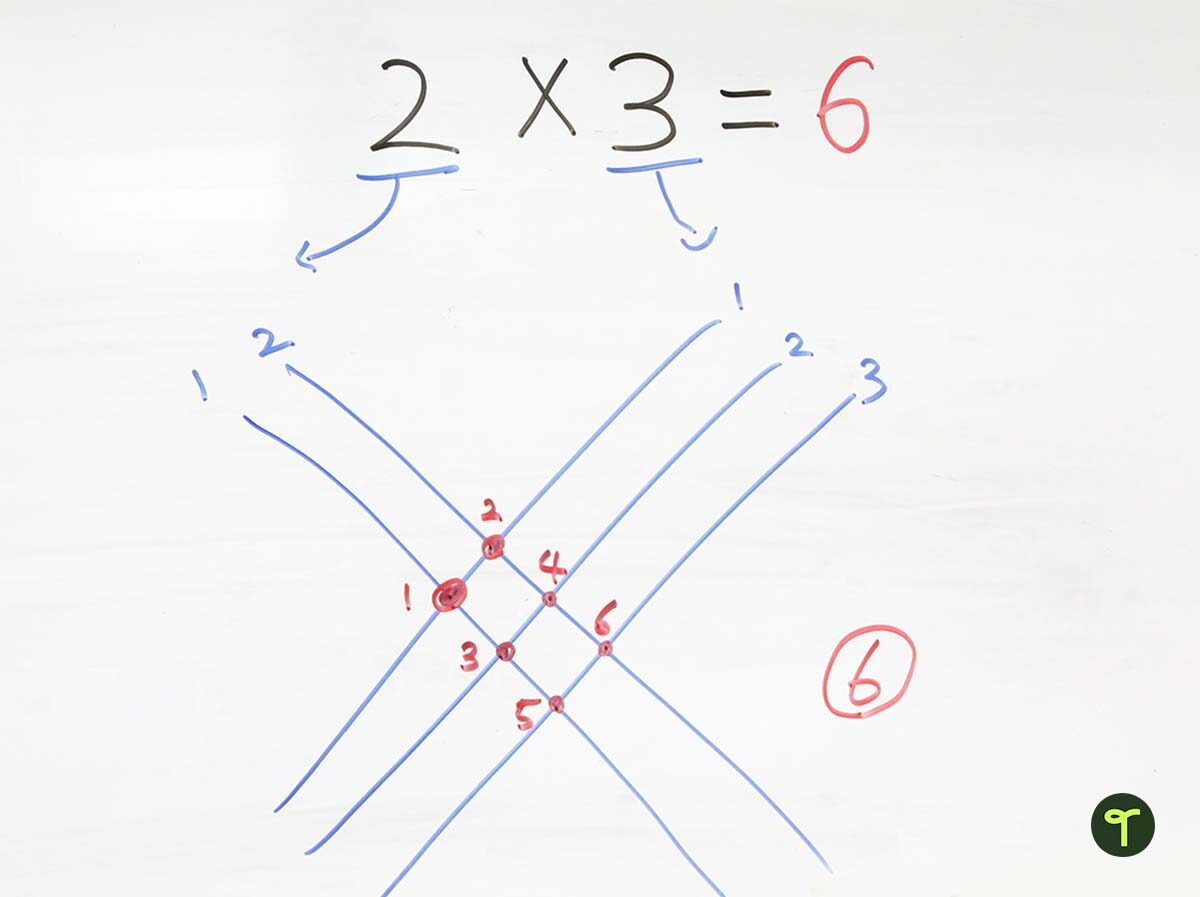
Now, let’s try a trickier multiplication problem.
- Each place value number in both numbers requires a set of lines.
- The 1 line for the number 1 in 12 is representing (1) ten.
- The 2 lines (going the same way) represent (2) ones.
- With the number 23, the 2 lines (going the other way) represent the (2) tens and the 3 lines represent the (3) ones.
- You need to make sure that both numbers you are multiplying crossover like the image below.
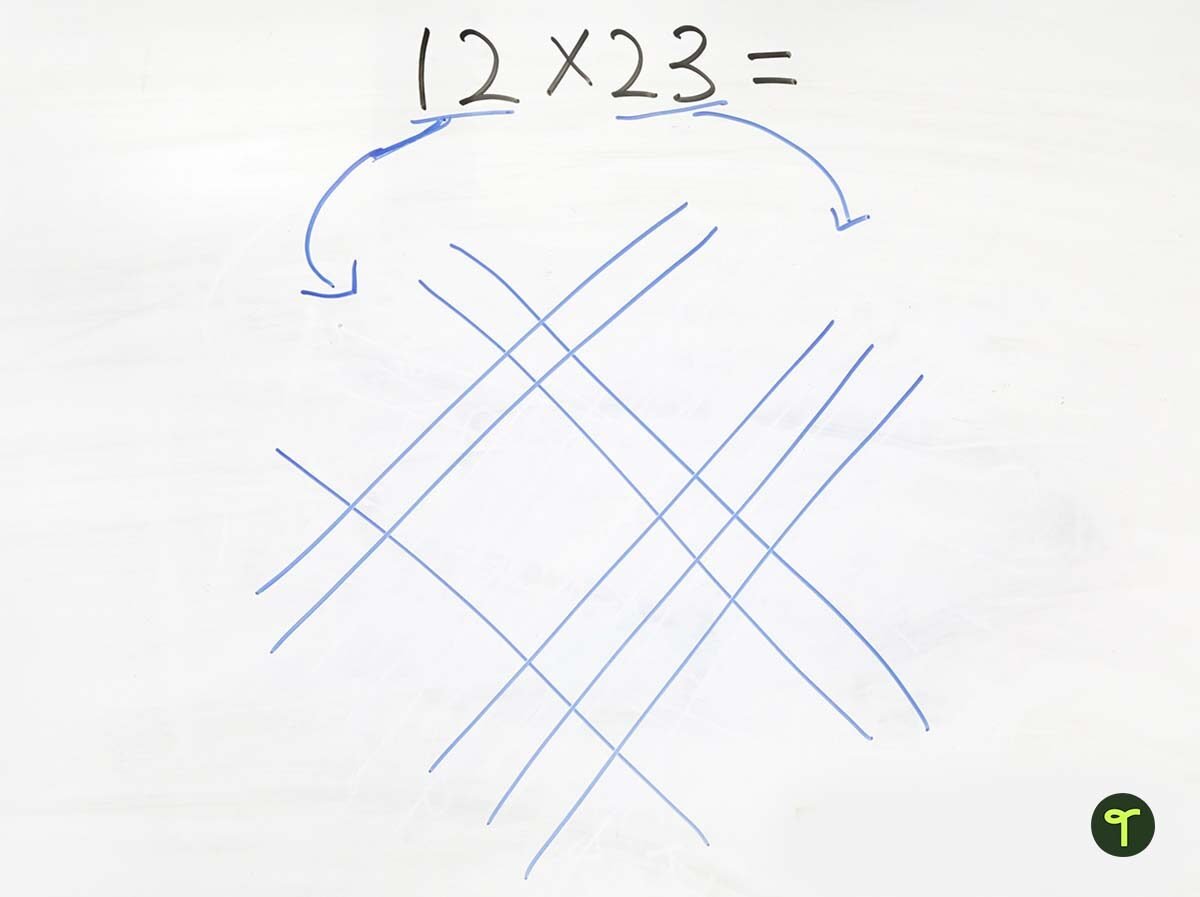
On the left corner, put a curved line through the wide spot with no points, and do the same on the right, separating the intersections into three groups.
Finally, count the three groups of intersections, giving you the answer of 276.

How does Japanese Multiplication work?
Remember, we are looking at the problem 12 x 23.
- Let’s start with the intersections on the far right. There are 6 intersections, which represent 2 ones x 3 ones. So 6 will be in our ones place for the answer.
- On the far left, there are 2 intersections. This set of lines represents the tens in the original numbers used in the problem. So 2 is 20, and 1 is 10, meaning 20 x 10 equals 200. So, our answer will begin with the number 2 in the hundreds place.
- In the top middle section, we have 2 tens x 2 ones which give us 40. Plus, in the bottom middle section, we have 1 ten x 3 ones which give us 30. We have a total of 70 for the tens place.
- All of this gives us a grand total of 276!
Check out our full collection of maths games, activities, worksheets and more teacher resources ready-made for the classroom!
Banner image via shutterstock/Lorena Fernandez







These are great! I just showed a couple to my 11 year-old who doesn't love maths, and she's excited to try them out at school tomorrow!
Hi Bev It's our pleasure to provide you with resources like this! Hope the tricks work well for your 11 year-old. Cheers Janeen
I showed the video to the extension Numeracy Group (Year 4) today and they were impressed and amazed by the 4 strategies. I played it several times. On the third time I paused after each strategy and asked the students to create one of their own examples. They were highly engaged and learnt 4 new and smart strategies and I gained a superb new resource. Thankyou
You're most welcome Robyn! Thank you so much for your comment. It is so nice to hear that this video and blog article has been helpful for you and your Year 4's! Best wishes, Holly